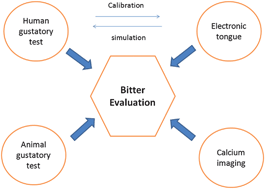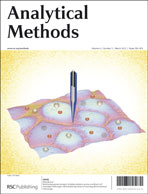Recent advances in bitterness evaluation methods
Abstract
Many active pharmaceutical ingredients (APIs) are bitter and the bitterness intensity is usually in direct proportion to the treatment efficacy of APIs. However, the bitterness of some APIs induces an unpleasant taste or odor that has been a hurdle to their commercialization. One potential solution to address this is to mask the unpleasant taste, the success of which depends on the precise evaluation of bitterness. Currently, various methods have been developed for bitterness evaluation, such as the human gustatory test, the animal gustatory test, calcium imaging and electronic tongues (taste sensors). In this paper, we review state-of-the-art bitterness evaluation methods and discuss their distinctive advantages and potential challenges for use in the pharmaceutical and food industries.


 Please wait while we load your content...
Please wait while we load your content...